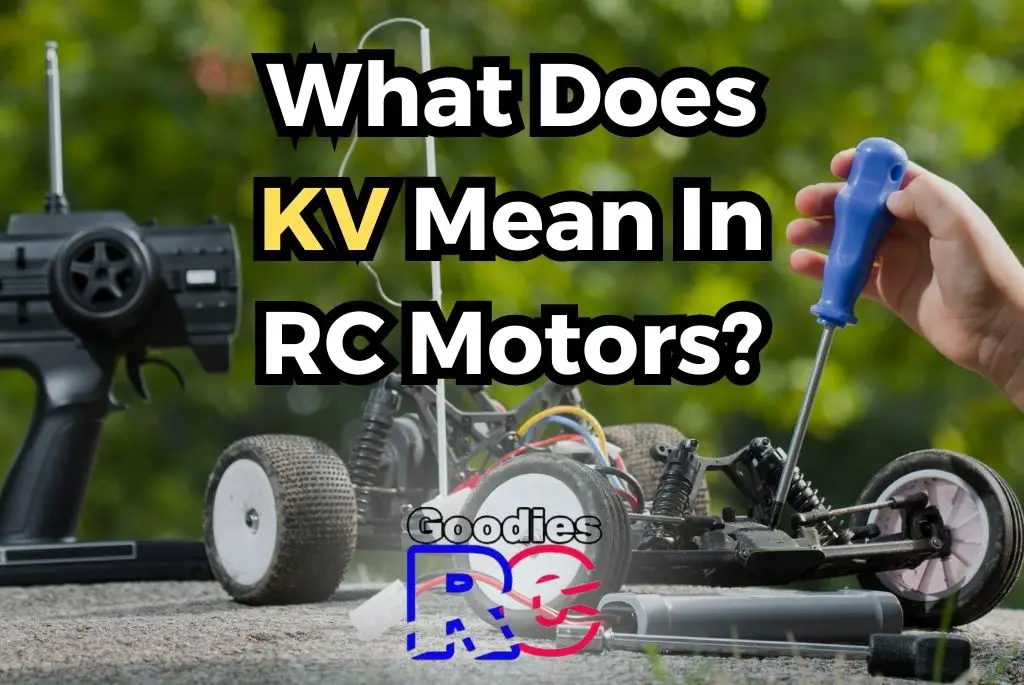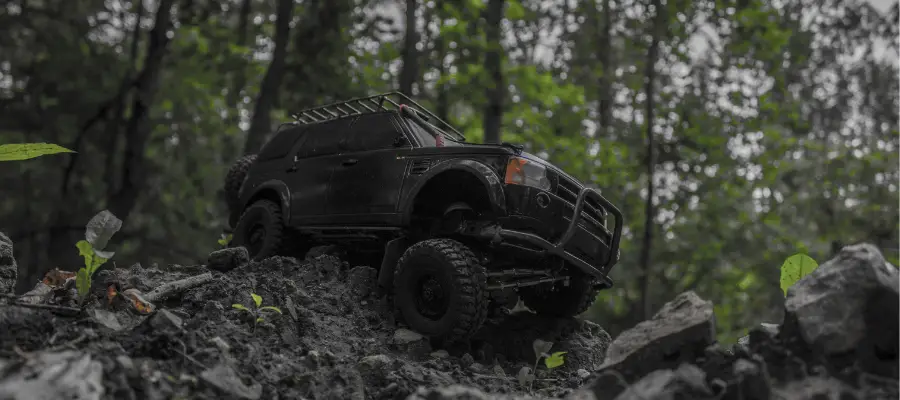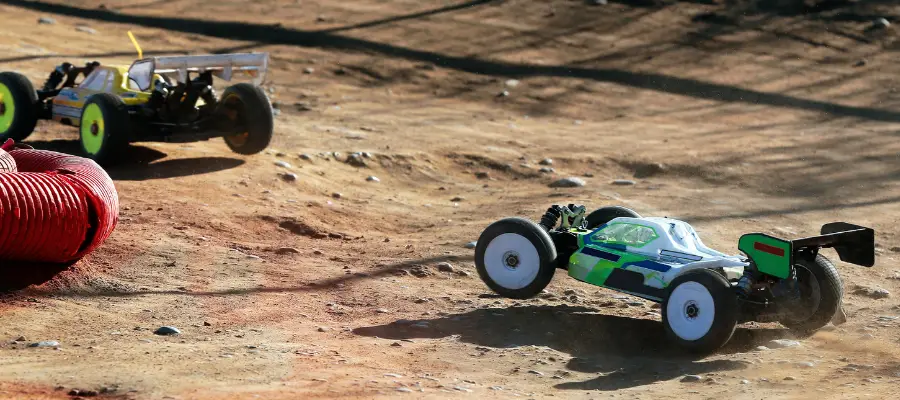Choosing the right motor for your RC is important for getting the performance you need depending on the car and driving style. A higher KV isn’t always the best option, especially if you’re into high-torque crawlers.
The KV of an RC motor refers to how many times the motor will spin for every Volt that goes through it (RPM/Volt). In general, higher KV motors are faster with lower torque. A lower KV motor spins slower with more torque. Basically, a 3000KV motor with an 11.1V battery will spin 33,300 per minute.

The KV helps you to determine the motor’s performance characteristics. It plays a vital role in matching the motor’s capabilities with the requirements of the vehicle. But KV alone doesn’t determine the motor’s overall power, it’s also influenced by other factors like the motor’s construction, windings, and efficiency.
1. Higher KV VS Lower KV Brushless Motors
A higher KV brushless motor operates at a faster rotational speed. These motors are known for their high RPM and are suitable for applications that require speed and acceleration. They’re commonly used in RC cars and racing drones for their ability to produce quick bursts of speed.
However, higher KV motors tend to draw more current, so they use more power and will drain your batteries quickly. They also generate more heat, so you’ll require cooling hardware to prevent heat damage.
On the other hand, a lower KV brushless motor rotates slower. These motors are favored for torque and endurance over raw speed.
Lower KV motors are commonly used in RC trucks, crawlers, and heavy-lifting drones, where pulling power and longevity are crucial. Due to their slower rotational speed, they draw less current. So they have improved efficiency and longer battery life.
Lower KV motors generate less heat, which minimizes the need for expensive cooling hardware. By the way, what do you do when your RC motor overheats? Check out this guide on Overheating RC motor to learn more.
2. Advantages of Low KV Motors

Low KV motors offer several advantages that make them suitable for specific applications. Here are some key benefits:
Improved Torque
Low KV motors provide higher torque, allowing vehicles to tackle challenging terrains and obstacles with ease.
Extended Battery Life
Due to their lower power consumption, low KV motors maximize the run time of your RC vehicle, allowing for longer play sessions.
Speaking of batteries have you ever wondered what is the effect of LiPo battery in RC cars? To learn more we highly recommend you to check out this guide: Will A LiPo Battery Make My RC Car Faster?
Enhanced Durability
With lower rotational speeds, these motors experience less wear and tear, resulting in increased durability and reduced maintenance requirements.
Better Control
The slower speed of low KV motors provides better control over the vehicle, making them ideal for precise maneuvers and technical driving. By the way, if you suddenly notice the speed of the RC car to be slow, that is a different thing. Check out this guide why your RC car would go slow all of a sudden to know more.
3. Advantages of High KV Motors

While low KV motors have their advantages, high KV motors also offer unique benefits. Here are some advantages of opting for a higher KV motor:
Increased Speed
High KV motors excel at delivering top-speed performance, making them ideal for racing enthusiasts and RC vehicles designed for speed.
Quick Acceleration
The higher rotational speed of high KV motors translates to rapid acceleration, allowing vehicles to reach their maximum speed quickly.
Compact and Lightweight
High KV motors are often more compact and lighter, making them suitable for smaller RC models and applications where weight reduction is essential.
Dynamic Performance
These motors provide a thrilling and dynamic driving experience, making them popular among hobbyists seeking an adrenaline rush.
4. Motor Turns and KV Ratings
Motors with a higher number of turns (such as 21T or 17.5T) generally have lower KV ratings. This means they rotate at a slower speed per volt. These motors are commonly used in applications that prioritize torque and control over top speed. Like crawlers and other slow-moving cars.
Motors with a lower number of turns (such as 6.5T or 3.5T) typically have higher KV ratings. This means they rotate at a faster speed per volt. These motors are often used in applications that require higher speed and acceleration, such as racing or high-performance cars and drones.
You may find this article to be of interest: How Fast Do 540 Size RC Motors Go?
Conclusion
Understanding KV in RC motors is crucial for choosing the right motor for your specific needs. Whether you choose a higher KV or a lower KV brushless motor depends on the requirements of your RC vehicle and what type of performance you’re looking for. Higher KV motors offer speed and acceleration but consume more power and generate more heat. On the other hand, lower KV motors prioritize torque, endurance, efficiency, and longevity. Consider the advantages and trade-offs of each type to make an informed decision.
